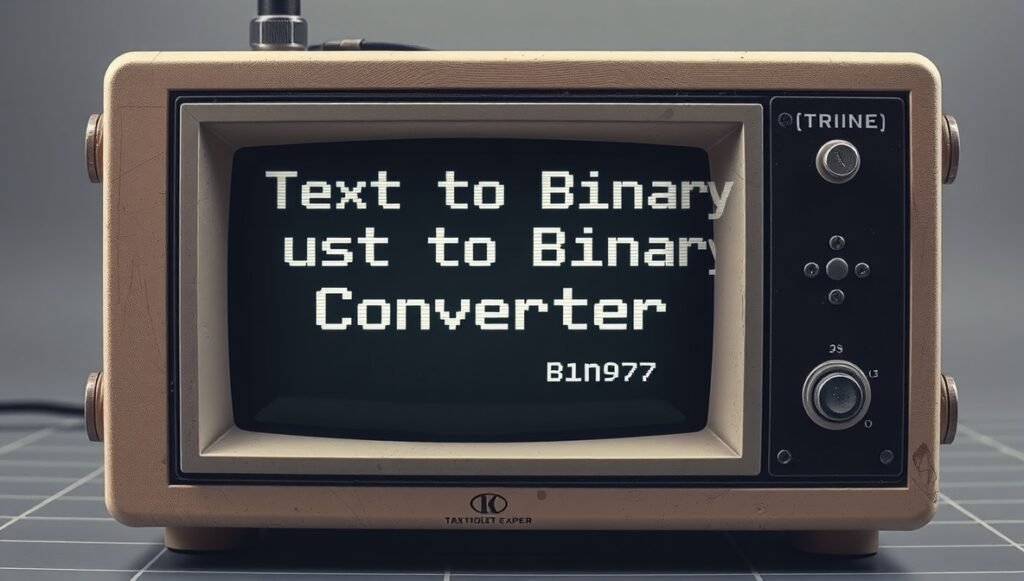The Language of Machines: An Introduction to Binary Code
In the digital age, our words, images, and actions are constantly being translated into a fundamental language that computers understand: binary code. This system, composed solely of ones and zeros, forms the bedrock of all modern computing. Every piece of data processed by a device, from a simple text message to a complex video game, is ultimately reduced to long sequences of these two digits. Understanding binary is like learning the basic alphabet of technology, revealing how complex information is broken down into the most elementary form for a machine to interpret and execute. While it may seem arcane, the principle is straightforward, and with the right tools, converting our human language into this machine language becomes an effortless task.
The process of translation hinges on standards like ASCII (American Standard Code for Information Interchange), which assigns a unique numerical value to every character on your keyboard. For instance, the uppercase letter ‘A’ is represented by the number 65. A Text to Binary Converter then takes this number and performs a second conversion, translating the decimal number 65 into its pure binary equivalent, which is 01000001. This chain of conversion—from a character we recognize to a number, and then from that number to a binary string—is the core mechanism that allows computers to store and manipulate textual data. Without this foundational process, digital communication as we know it would be impossible.
The Mechanics Behind Text to Binary Conversion
To truly appreciate the utility of a fast conversion tool, it’s helpful to grasp the manual process it replaces. Manually converting a sentence into binary is a meticulous, multi-step endeavor. First, you must reference an ASCII table to find the numerical value for each character, including letters, spaces, and punctuation. Then, for each number, you must perform a series of divisions by two, carefully tracking the remainders to build the 8-bit binary sequence from right to left. For a single word like “Hello,” this process must be repeated five times, and for a full sentence, it becomes a time-consuming and error-prone task, especially for those unfamiliar with binary arithmetic.
This is where a modern Text to Binary Converter proves indispensable. These sophisticated online tools automate the entire process with remarkable efficiency. The user simply pastes their text into a designated field, and with a click of a button, the tool instantly processes the entire input. It looks up each character’s ASCII value and executes the binary conversion algorithm in milliseconds, presenting the user with a flawless, continuous string of binary digits. This automation eliminates the risk of human error and saves an immense amount of time, making what was once a tedious academic exercise into a practical and accessible utility for developers, students, and curious minds alike.
Practical Applications of a Text to Binary Converter
The uses for a quick and reliable text-to-binary tool extend far beyond simple curiosity. In the world of computer science and programming education, it serves as an essential learning aid. Students can input words and sentences to see immediate, real-world examples of how data is encoded, solidifying their understanding of fundamental computing concepts. For software developers and engineers, these converters are invaluable for debugging and low-level programming tasks. When working with character encoding issues or communicating directly with hardware, the ability to quickly check the binary representation of a string can be critical for diagnosing and resolving technical problems.
Furthermore, these tools have applications in digital security and data obfuscation. While not a secure encryption method, converting sensitive text like passwords into binary can be one step in a larger data-hashing process, helping to obscure information from plain sight. Electronics hobbyists and engineers working with microcontrollers also frequently use these converters to embed text-based commands or messages directly into machine code. The speed of a modern converter allows for rapid prototyping and testing, streamlining workflows that depend on precise digital communication between software and hardware components.
Choosing the Right Tool for Efficient Conversion
When selecting a fast tool to convert sentences into binary code, several key features define a high-quality converter. Speed is, of course, paramount; the tool should deliver results instantaneously, regardless of the input length. Accuracy is non-negotiable; the output must be a perfect binary translation with no missing bits or incorrect characters. A superior converter will also feature a clean, intuitive user interface that allows for easy input and clear output, often providing a copy-to-clipboard function for seamless use of the generated binary code.
Look for tools that offer additional functionalities, such as the ability to convert binary code back into text, providing a two-way street for translation. Robustness is also important; the tool should correctly handle not just standard alphanumeric characters but also spaces, punctuation marks, and special symbols. The best online converters are lightweight, require no software installation, and are accessible from any web browser, making them a convenient and powerful resource for anyone needing to bridge the gap between human-readable text and machine-executable binary data.







